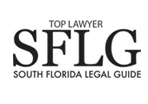New hurricane model: Is 13.0 a lucky number for insurers?
Insurance rating is a black box in many ways. There are so many layers of data that go into it, in fact, that rating may be more like a matryoshka doll made up of nesting analytical processes.
In past posts, we have talked about the various factors that go into determining what to charge a homeowner for property insurance. Everything from the types of materials used to build the house — bricks, wood, straw? — to location, location, location go in one end of an actuarial formula and come out the other end as a monthly premium. (Are those formulas “algorithms” now? Google has changed our data-crunching vocabulary forever, it seems.) This is true everywhere, not just in Florida.
One of the most important factors going into that black box is the risk of damage in a hurricane. That risk, of course, is broken into two categories — wind and water — and insurers leave that part of the formula up to specialists in risk assessment companies. These companies have their own black boxes that analyze data from the National Oceanic and Atmospheric Administration and other weather forecasting agencies as well as geological data from a variety of sources.
Risk Management Solutions Inc. is one of these companies, and RMS announced recently that it has released an update to its North Atlantic hurricane model. This is version 13.0 for the industry leader.
The company says that the new program is able to quantify risk from storm surge more accurately than past versions. It is also able to gauge the interaction between storm surge and wind — particularly important for property insurance policies that exclude water damage. Another enhancement is the model’s ability to distinguish between an insurer’s potential losses for its residential and commercial policies.
According to RMS’s press release, the emphasis on storm surge predictions grew out of the damage caused by Superstorm Sandy. To illustrate the power of the new version, the statement adds, “there is a 20 percent chance that storm surge loss will be greater than wind loss for any U.S. hurricane that makes landfall.”
The upshot for consumers is that their coverage could change when they renew their policies. Insurance companies and brokers should disclose changes like this in time for consumers to shop for a more favorable policy.
But, again, Florida is a tough market, and consumers are now always able to compare homeowners rates and to tell the priciest insurers to stick their premiums back in their black boxes and hit the road.
Source: Business Insurance, “RMS’ updated North Atlantic hurricane model includes storm surge,” Kate Shepherd, July 31, 2013
Share




